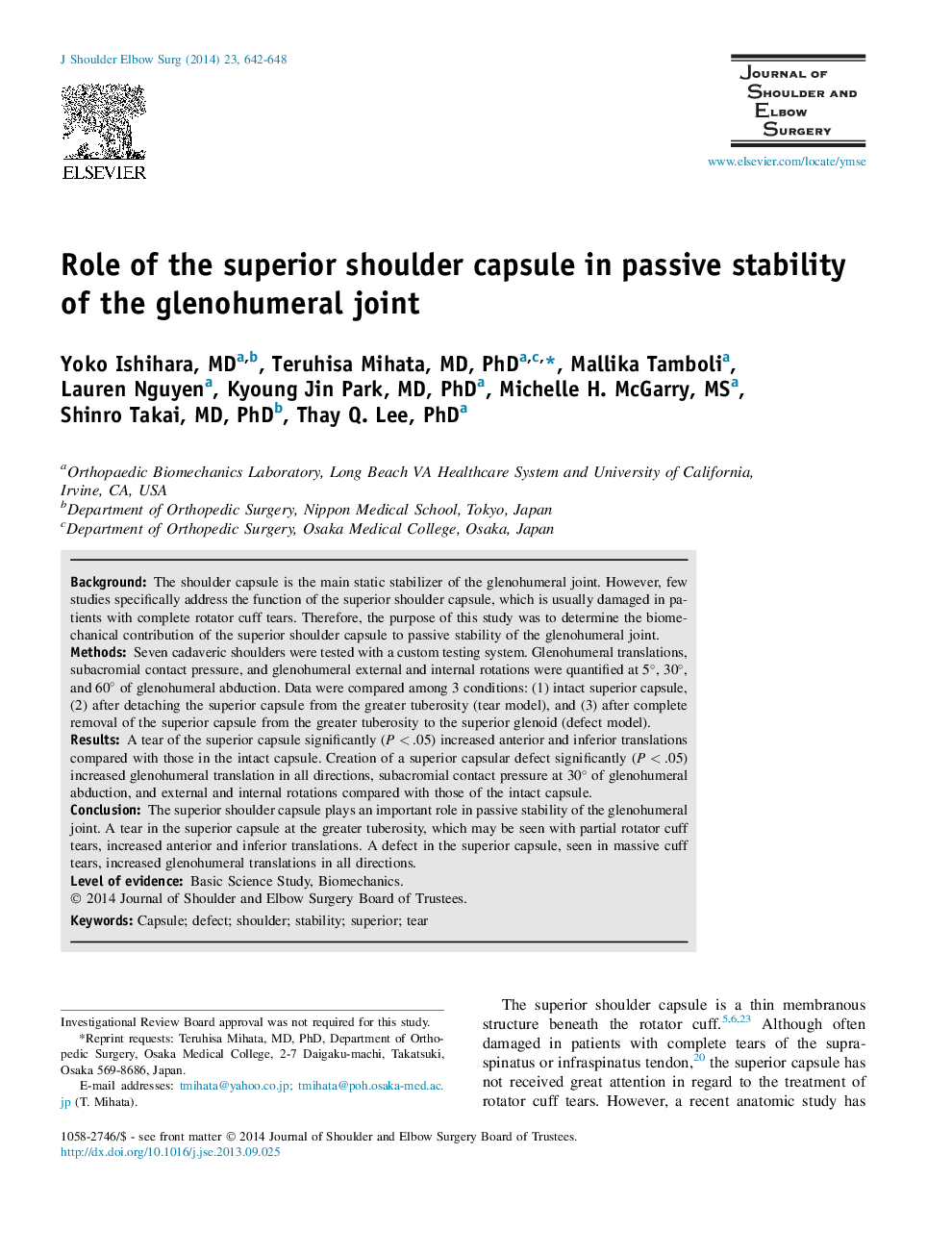| Article ID | Journal | Published Year | Pages | File Type |
|---|---|---|---|---|
| 4074424 | Journal of Shoulder and Elbow Surgery | 2014 | 7 Pages |
BackgroundThe shoulder capsule is the main static stabilizer of the glenohumeral joint. However, few studies specifically address the function of the superior shoulder capsule, which is usually damaged in patients with complete rotator cuff tears. Therefore, the purpose of this study was to determine the biomechanical contribution of the superior shoulder capsule to passive stability of the glenohumeral joint.MethodsSeven cadaveric shoulders were tested with a custom testing system. Glenohumeral translations, subacromial contact pressure, and glenohumeral external and internal rotations were quantified at 5°, 30°, and 60° of glenohumeral abduction. Data were compared among 3 conditions: (1) intact superior capsule, (2) after detaching the superior capsule from the greater tuberosity (tear model), and (3) after complete removal of the superior capsule from the greater tuberosity to the superior glenoid (defect model).ResultsA tear of the superior capsule significantly (P < .05) increased anterior and inferior translations compared with those in the intact capsule. Creation of a superior capsular defect significantly (P < .05) increased glenohumeral translation in all directions, subacromial contact pressure at 30° of glenohumeral abduction, and external and internal rotations compared with those of the intact capsule.ConclusionThe superior shoulder capsule plays an important role in passive stability of the glenohumeral joint. A tear in the superior capsule at the greater tuberosity, which may be seen with partial rotator cuff tears, increased anterior and inferior translations. A defect in the superior capsule, seen in massive cuff tears, increased glenohumeral translations in all directions.
